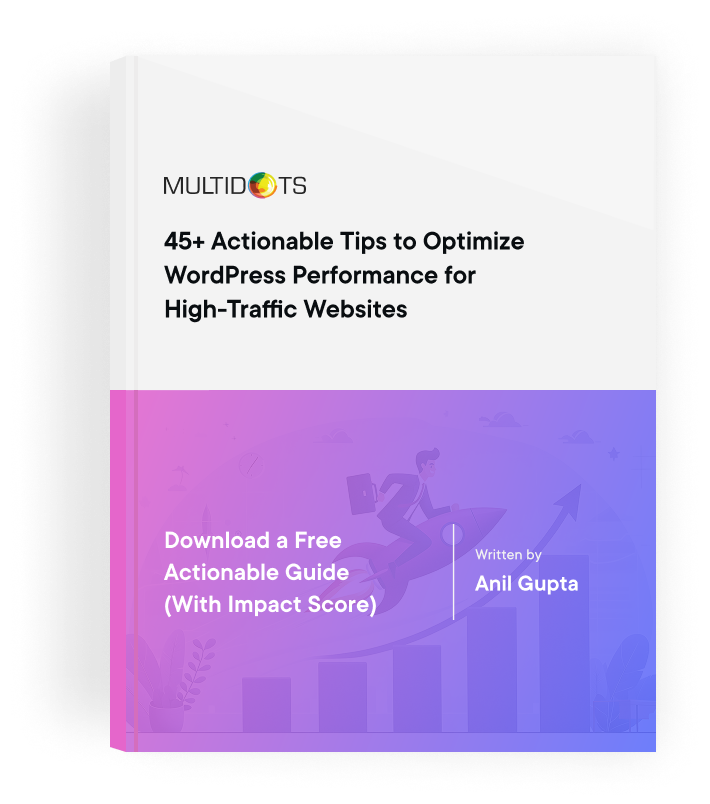What Influences the Cost of Adobe Experience Manager?
Uncover key factors that impact the cost of Adobe Experience Manager and how it scales for enterprise-level solutions

Table of Contents
As you get closer to choosing Adobe Experience Manager (AEM) as your enterprise Content Management System (CMS), it’s natural to start thinking about what this decision means for your business. Understanding AEM's costs can feel overwhelming, and explaining the value of such a significant investment to your stakeholders isn’t easy. You might be wondering: What are the real costs beyond just the licensing fees? Are there any hidden expenses that could throw off your budget?
We’re going to break down the various costs involved in implementing AEM, helping you grasp the pricing structure, uncover any hidden costs, and highlight the key factors that can influence the overall expense!
What Factors Influence the Cost of Adobe Experience Manager (AEM)?
The cost of implementing AEM can be influenced by several factors, each playing a significant role in determining your overall budget:
Deployment Type: Choosing between AEM as a Cloud Service (AEMaaCS) or an on-premise setup impacts both initial and ongoing costs. Cloud options offer scalability with higher subscription fees, while on-premise solutions involve a larger upfront investment but may reduce long-term operational costs.
Licensing Fees: AEM licensing varies based on deployment scale, user numbers, and required features. Annual subscription licenses might lead to higher cumulative costs, while perpetual licenses require a larger upfront payment but can save money in the long term.
Customization and Development: The more tailored your AEM solution needs to be, the higher the costs. Complex custom templates, components, and workflows require additional resources and expertise.
Third-Party Integrations: Connecting AEM with other systems like CRM, ERP, or marketing tools often requires custom development and ongoing maintenance, adding to the overall cost.
Implementation: Bringing AEM to life within your organization may involve hiring consultants or a professional services team, particularly for complex projects or data migration from legacy systems.
Breaking Down AEM's Pricing Structure
The costs associated with AEM can be complicated, and they vary depending on several factors, which we'll break down to give you a clearer picture.
Licensing Fees: What You Need to Know
AEM operates primarily on a subscription-based model, and the cost of these licenses can vary widely based on your organization’s specific needs. Several factors influence the overall cost, including the number of users who will be accessing the system, the volume of digital content you'll be managing, and the specific features or modules your organization requires.
For example, the more users or seats you need, the higher the licensing fees will be. Similarly, if your organization handles a large volume of digital assets or requires advanced features like personalization or AI-driven insights, you can expect the costs to rise accordingly. Geographic location also plays a role, as pricing can vary by region due to differences in local markets.
In terms of numbers, enterprises should be prepared for a wide range of licensing fees, typically ranging from tens of thousands to hundreds of thousands of dollars annually. For AEM as a Cloud Service (AEMaaCS), costs can be particularly steep – upwards of $5,000 per user per month, according to reports. This can significantly increase your overall expenses, especially if your organization requires a large number of users. To get a precise figure, it's essential to conduct a thorough needs assessment and obtain a quote directly from Adobe or an authorized reseller.
Implementation and Customization Costs Explained
Beyond licensing, implementing AEM comes with its own set of costs. These typically include expenses related to consultation and planning, system integration, data migration from existing platforms, and the initial configuration and setup of the system. Each of these steps requires a significant investment, both in terms of money and time.
AEM’s extensive customization options are one of its biggest strengths, but they also come with additional costs. Developing custom components, templates, and workflows to meet your organization’s unique needs can be expensive. Integrating AEM with third-party systems like CRM or ERP platforms, creating automation scripts, and enhancing the design and user experience are all tasks that add to the overall cost.
Implementing AEM is not a quick process, as it often requires several months and the involvement of skilled developers, project managers, and other specialists. The complexity of your project will dictate the time and resources needed, and customization can significantly increase these costs. Each organization’s needs are different, so the total expense will vary accordingly.
What Are Some Hidden Costs to Be Aware Of?
When considering the total cost of AEM, account for expenses that might not be immediately obvious. These hidden costs can significantly impact your budget over time, and being aware of them upfront can help you avoid surprises down the line.
Support
Support is an important aspect of any AEM implementation, and Adobe offers several levels to suit different needs. Standard Support is included with your AEM license at no additional cost, providing basic assistance for your team. However, many organizations choose Premium Support for quicker response times and more personalized assistance. The benefits of premium support include priority access to Adobe’s support team and tailored solutions to complex issues. Since the cost of premium support varies depending on your specific requirements, we recommend contacting Adobe directly for a quote.
If your AEM environment is particularly large or complex, Managed Services might be a necessary investment. Managed services cover everything from ongoing system maintenance to performance optimization, with pricing based on factors like the number of users, storage needs, and the level of support required. Like premium support, costs for managed services vary, so getting detailed pricing from Adobe is essential.
Maintenance Costs
Maintenance is another area where hidden costs can accumulate. If you’re using Adobe Experience Manager Cloud Service, some automated maintenance tasks, such as regular updates and security patches, are handled by Adobe, reducing the burden on your internal teams.
However, manual maintenance tasks might still be required, especially for on-premise deployments. These tasks could include custom updates, patching, and bug fixes, often necessitating specialized developers. The costs associated with this type of manual maintenance can add up, particularly if frequent updates are needed or if your system requires extensive customization.
Training Costs
Finally, don't overlook the cost of training your team to effectively use AEM. AEM is not the most user-friendly CMS and there is definitely a learning curve involved. However, Adobe offers a range of training programs and certification courses tailored to different user roles and levels of expertise. While these programs are invaluable for maximizing your investment in AEM, they do come with a price.
Training costs can vary depending on the depth and duration of the courses, so it’s best to check Adobe’s official website for the most accurate pricing information. Investing in training upfront can help avoid costly mistakes and ensure your team is fully equipped to leverage AEM's capabilities.
AEM vs WordPress: Is the Investment Worth It?
If you're looking into AEM's costs, you're probably giving it serious thought as your CMS but haven't made a final decision yet. It might be worth taking a look at WordPress too – it's the most popular enterprise CMS out there, powering 45.4% of the top 1000 websites, while AEM accounts for 6.6%.
Here’s a closer look at how they compare across other criteria:
| Criteria | AEM | WordPress |
|---|---|---|
| Cost Comparison | High initial and ongoing costs. | Low to moderate; hosting is affordable, and many plugins are free or low-cost. |
| Customization and Flexibility | Although flexible, its complexity and the need for technical expertise in certain areas can make it less accessible for users without a strong technical background. | Highly customizable with thousands of plugins and themes; user-friendly interface. |
| Community Support | Dedicated community platform where users can engage, ask questions, and share experiences. | Large and active community; extensive resources, tutorials, and documentation available. |
| Performance and Security | High performance and security, but complex integration. | High performance and security; regular updates and a wide range of security plugins available. |
Let’s look at this in a bit more detail.
Cost Comparison
AEM is known for its high initial and ongoing costs. Licensing fees alone can reach into the hundreds of thousands of dollars annually, making it a significant investment. Beyond licensing, the costs of implementing and maintaining AEM are substantial, often requiring specialized developers and continuous support.
In contrast, WordPress is an open-source platform, meaning there are no licensing fees. The cost of hosting is generally low to moderate, and with thousands of free or low-cost plugins available, the overall budget for WordPress is far more manageable. This affordability makes WordPress a great choice for organizations looking to control costs without sacrificing functionality.
Customization and Flexibility
AEM offers customization options, but its complexity often requires a high level of technical expertise, making it less accessible for teams without strong technical backgrounds. While AEM is highly flexible, the proprietary nature of the platform can sometimes limit innovation and adaptation.
WordPress, on the other hand, is celebrated for its extensive customization capabilities. With a vast array of plugins and themes, WordPress allows businesses to tailor their websites to specific needs with relative ease. Its user-friendly interface also means that even non-developers can make significant customizations, providing greater flexibility and adaptability for a wide range of use cases.
Community Support and Resources
When it comes to community support, WordPress has a clear advantage. It has a large, active global community that offers extensive resources, tutorials, and documentation. This vibrant community ensures that help is always available, whether through forums, blogs, or third-party service providers.
In contrast, AEM’s community is smaller and more specialized. While AEM does offer a dedicated platform for users to engage and share experiences, the support options are often tied to the licensing fees. For organizations that prefer community-driven support or need a broad range of resources, WordPress stands out as the better option. Moreover, professional services like those provided by Multidots can bridge any support gaps, ensuring a great experience with WordPress.
Performance and Security
AEM is built for high performance and security, making it a strong choice for enterprises with complex needs and high traffic volumes. However, this performance often comes with complex integration requirements and higher maintenance costs. WordPress, with the right optimization and hosting solutions, can achieve similar levels of performance.
Security is another area where WordPress really comes into its own, thanks to a wide range of security plugins and regular updates from the open-source community. Professional services can further enhance security, making WordPress a secure and reliable option for enterprise use.
Return on Investment (ROI)
While the high initial investment in AEM can be justified by its long-term value, especially for large enterprises with complex digital needs, it’s important to consider the ROI. WordPress and other open-source alternatives offer a significant return on investment by keeping costs low and providing greater flexibility. The lower initial and ongoing costs of WordPress, combined with its adaptability, can deliver substantial long-term value, especially for businesses that prioritize cost-effectiveness and scalability.
Making an Informed Decision with Multidots
Understanding the costs associated with AEM is so important, from licensing fees to implementation, customization, and ongoing maintenance. When choosing a CMS, consider how these expenses align with both your business objectives and budget constraints. While AEM offers excellent capabilities, WordPress is a cost-effective alternative, offering flexibility, scalability, and a lower total cost of ownership.
As you think about your options, consider how WordPress might meet your enterprise needs more efficiently. To explore this further, get in touch with Multidots today and discover how we can help you maximize your CMS investment with WordPress!
Feel free to schedule a quick call with our migration expert.
Contact Us
